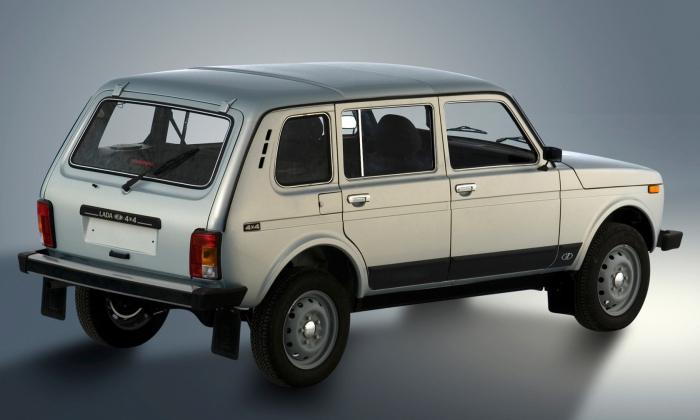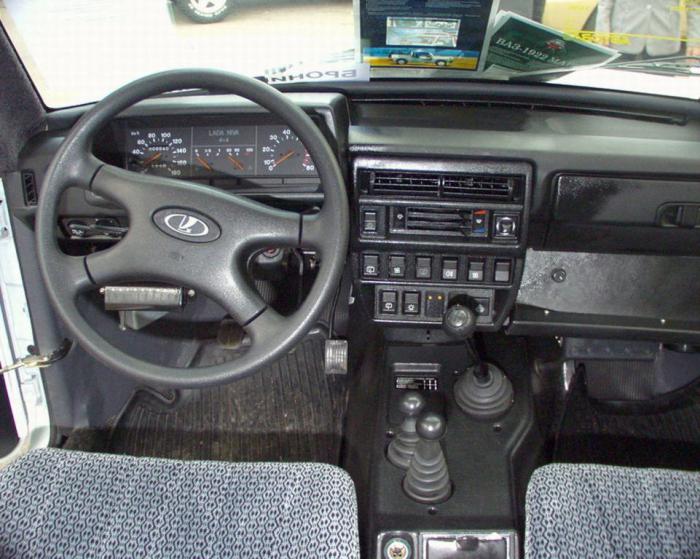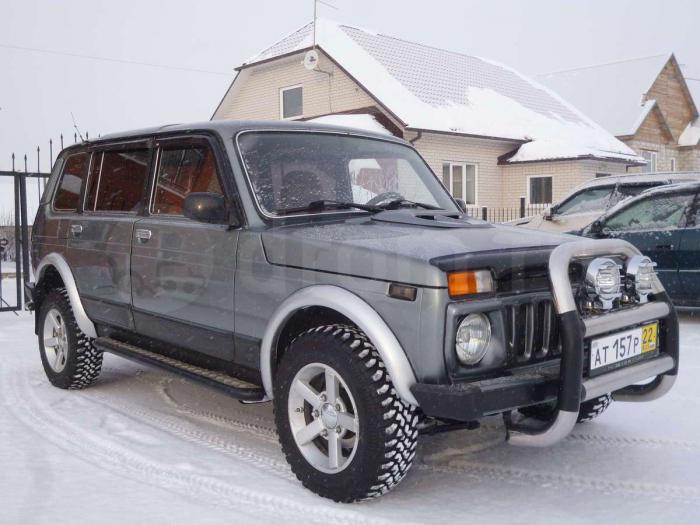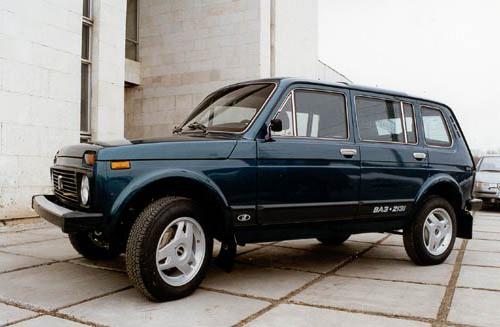Some of the motorists about the Niva 2131 SUV will say that this is just an ordinary Niva, but stretched. In fact, this is not at all the case. Let's learn more about the model, history of creation, technical and driving characteristics.
The best invention of VAZ
Yes, this is how this abbreviation can be deciphered, although many are sure that Niva is just a name. And this is a real fact. After all, there is no other car in the domestic auto industry that would have been produced and successfully sold for a quarter of a century with minimal changes. And there are practically no such cars in the world. And Niva is still in demand and popular today. One of the reasons for the popularity of the Niva 2131 SUV is the price. In the secondary market, it starts at $ 2,000, which is not too expensive for such characteristics.
Historical facts
The first SUV was created at VAZ in 1977. Modern at that time model 2121 actually had no analogues in the history of the global automotive industry. Today, the scheme that was used in Niva cars is the usual norm for an off-road vehicle. But in those years it was a real discovery and revolution. The new car turned out to be compact, practical, quite comfortable and cheap. At that time, no all-wheel drive car had such qualities.
Many modifications of these cars were produced, including export versions. On the basis of the VAZ-2121 in 1996, the Niva 2131 car began to be produced.
Body
Usually, when people talk about "Niva", the short version comes to mind. It is these models that are especially suitable for off-road driving and are distinguished by their special cross-country ability. There are no cars in the Russian car industry that are able to drive better in such conditions. And even the famous UAZ is slightly inferior to this SUV in terms of cross-country ability (due to the greater mass and dimensions). But do not forget that the strength of the body was not calculated for permanent off-road use. With intense loads, this primarily affects him. A couple of years of such operation is enough for dents to appear in the load-bearing elements of the body, cracks in the spars. Therefore, car owners often digest and in every possible way strengthen the supporting elements of this part of the SUV.
In urban conditions, the body can also suffer significantly. "Niva 2131" has poor corrosion resistance, and you can compare it with the bodies of the classics. Clearance is not sufficient protection against threshold corrosion. The most unprotected places are the joints of body parts, the edges of the fifth door, the windshield frame. Cars produced in recent years are often poorly painted, so corrosion can appear in absolutely any place. For these machines, it is desirable to carry out measures every year to treat the body with an anti-corrosion compound and preventive tinting. In terms of strength, this is really the best car in terms of rigidity and strength.
In 1999, Niva 2131 received updated lightweight bumpers. Before that, aluminum bumpers could break fences. The elongated body slightly worsened the patency, but naturally improved handling. There are rumors about long bodies among motorists that they sometimes break in half, and where there are no roads, they twist like a screw. This applies to the very first Niva 2131 cars and three-door models that were not durable. But in subsequent versions, stiffness and strength have improved significantly, and now there are no problems with this.
"Niva 2131" - tuning
The body and interior of the car is a huge scope for creativity. Almost everything here is subject to change. You can start by upgrading the dashboard if the old one is tired. Also, specialists are finalizing the stove, various indicators, power windows and much more. 
There is a lot of information on changing and forcing the engine, brakes. Craftsmen remake the transmission, interfere with the work of the suspension. In general, this machine is great for all sorts of improvements. On the basis of the car body "Niva 2131" tuning allows you to radically change the appearance for the better.
Engine
Initially, these cars were equipped with 79 hp carburetor engines and a displacement of 1.7 liters. They are unpretentious and reliable. Since 1996, injection engines of 1.7 liters and 1.8 liters have been installed on the Niva. Among the complete sets there are models with a carburetor engine, with an injection 1.7-liter unit with a capacity of 80 hp and with a carburetor 1.8 liter, 82 hp.
The carburetor engine is equipped with contactless ignition, has a good resource. But about this - how lucky. This is a real lottery. The engine is distinguished by confident traction in low and low gears.
The injection 1.7-liter unit can be equipped with a single injection system, which was used until 1999, or with a distributed injection from Bosh. Last year, cars were no longer equipped with carbureted engines, but they are still being produced, because there are a lot of carbureted cars on the Tuesday market.
Units with distributed injection are a little more powerful, and due to the fact that they are equipped with a knock sensor, they can even work on low-quality fuel. But the injection version is finicky in the oil issue. Among motorists, a single-injection system is considered more reliable, but in the event of a breakdown, finding spare parts for it is a very difficult task. 
In 1995, they developed a 1.8 liter engine. However, they did not launch it on the conveyor. It is produced at the facilities of pilot production. It is installed on the Lada Niva 2131 SUV and other elongated models. As for the power system, here it is predominantly carbureted, but you can also find an injection version.
This engine, according to its characteristics, is more suitable as a motor for an SUV. Here is the most powerful torque of the entire line.
Transmission
It is worth stopping here separately. The car is equipped with permanent all-wheel drive, which is why the 2131 (4x4 Niva) model is so popular. From the very first design to the present day, the transmission scheme has not changed much. The mechanism is still the same differential. It has a lock, and the transfer case has a low gear.
The torque from the transfer case to the axles is transmitted using shafts that are equipped with two hinges. The disadvantage of such a scheme is significant vibration during operation. If the car is adjusted, then they are almost inaudible. 
Since VAZ wanted to achieve complete unification with cars, the transfer case housing is spaced apart from the gearbox housing, which is taken from the classics.
Running system
Excellent handling and smoothness when driving gives an independent suspension in the front and a spring dependent rear. The springs do not sag, and the ground clearance does not change. If you operate the car carefully, then there will be no problems with the suspension.
brakes
All versions and models of the Niva are equipped with front disc and rear drum brakes. The brake system is one circuit for the front wheels and another one for all wheels. Models that were produced after 1994 require little or no adjustment.
Body
The body is a five-door station wagon. Machine length - 4220 mm, width - 1680 mm, height - 1640 mm. The wheelbase is 2700 mm. Vehicle weight 1550 kg. The volume of the fuel tank is 65 liters. Power units, both carburetor and multipoint injection. The gearbox is a five-speed manual. The maximum speed is 135 km/h. The average fuel consumption in the city is 11 l/100 km. For a Niva 2131 car, the price ranges from 100,000 rubles to 350,000 rubles.
On asphalt, on the ground
Under the hood of the tested car is not too powerful 1.7 liter engine. Although the power is only 79 hp, this turned out to be enough for a confident ride in the city in a large stream of other cars. 
The suspension makes the movement smooth, the base and weight of the Niva also contribute to this. The ride is much smoother than on the short version, and it also doesn't wobble over bumps in the road. But only passengers can fully appreciate the comfort.
Drivers should be aware that for its size and weight, the 31 can lean when cornering. City tires are not able to keep the car at high speeds and sharp turns, so it can sometimes skid.
As soon as the 31st "Niva" moves off the asphalt, you can literally be amazed at how comfortable it rides. Even if the front wheels "catch" the springboard, then it all goes very smoothly. However, with regard to cross-country ability, everything is a little worse than the short version. The 31st "Niva" has every chance of landing on its belly. Therefore, do not climb into the big "mud baths". But on confident dry off-road, this car is just a beast. 
Even on road tires, the car easily overcame all obstacles, and it was very confident for an SUV like the Niva 2131. A test drive will help you verify this. In most situations, you don’t even have to lock the differential and use a lower gear.
In the dry matter
What is "Niva" today? The same as 25 years ago. This is a relatively comfortable, moderately dynamic, versatile, reliable and passable car for off-road use. This car was created for those who are unable to maintain two cars, but travel a lot both in the city and where there are no roads.
On it you can go on a romantic trip, and on a hiking trip. The car moves confidently on absolutely any roads. The voluminous trunk of the 31st model will also be a big plus. At the same time, the price for it is quite moderate. 
As for repairs and spare parts, the manufacturer tried and unified most of the components of the classic VAZ models, so there is no shortage of basic spare parts on the market.
This car is worth buying, if only because its popularity makes the manufacturer produce new models, creating various interesting modifications based on the classics.
So, we found out what the technical characteristics of the Niva 2131 are, the body and the price.
